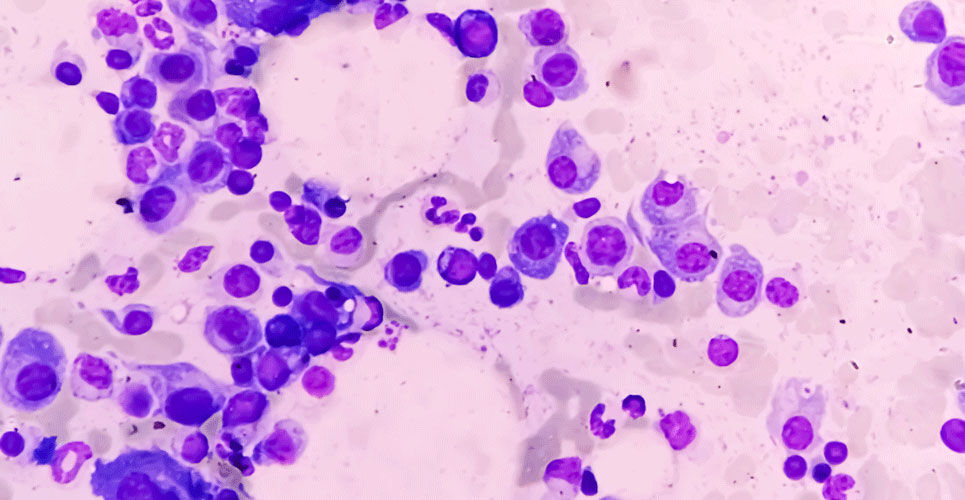In a phase 1/2 trial talquetamab a bispecific antibody demonstrated robust efficacy in patients with relapsed/refractory multiple myeloma
In an abstract presented by US researchers at the American Society of Haematology (ASH) conference in New Orleans, it was shown that talquetamab demonstrated robust efficacy and manageable safety in patients wit heavily pre-treated relapsed or refractory multiple myeloma.
Multiple myeloma is a malignancy of terminally differentiated plasma cells that typically presents with bone marrow infiltration of clonal plasma cells and monoclonal protein in the serum and/or urine. Multiple myeloma accounts for 10% of all haematological malignancies and the global incidence was found to be 160,000 in 2020 and with a mortality of 106,000. Although treatments have improved in recent years, a proportion of patients experience relapse as shown in a 2016 study of 511 patients, which found that 16.0% experienced early relapse, with median time to relapse of 8.0 months.
Talquetamab is a bispecific IgG4 antibody which binds to both the the G protein–coupled receptor, family C, group 5, member D (which is highly expressed on multiple myeloma (MM) cells plasma cells) as well as to CD38 receptors that are also highly and uniformly expressed on MM cells. In preclinical studies, talquetamab was found to be a promising novel anti-myeloma agent in relapsed/refractory MM. In MonumenTAL-1, a phase 1/2 trial, researchers collected safety, efficacy, pharmacokinetic and pharmacodynamic data and which was used to select two appropriate doses of talquetamab: 0.405 mg/kg subcutaneous (SC) weekly and 0.8 mg/kg SC every other week. In the data presented at ASH, researchers used both doses and recruited patients with relapsed/refractory disease with ≥3 prior lines of therapy. A step-up dosing schedule was used to mitigate the risk of severe cytokine release syndrome (CRS) and the primary endpoint was the overall response rate (ORR) based on independent committee review. Several secondary endpoints were used including the duration of response (DOR), the rate of complete response or better (≥CR) and progression-free survival (PFS) as well as the incidence of adverse events.
Talquetamab outcomes in relapsed/remitted disease
A total of 288 with median age was 67 years were included and of whom, 143, received the 0.405 mg/kg dose. Overall, patients had received a median of 5 prior therapies.
Among those receiving the 0.405 mg dose, the ORR was 73% and the median time to response was 1.2 months, the median time to complete response (CR) was 2.1 months and the median DOR was 9.3 months, with a median PFS of 7.5 months. The most common adverse events (AEs) were CRS (79%), dysgeusia (48%), anaemia (45%) and skin-related AEs (56%). Data for the 0.8 mg/kg patients was not given in the abstract.
The authors concluded that talquetamab demonstrated robust efficacy, adding that further phase 1 studies were in place to evaluate the drug in combination with other agents in patients with relapsed/refractory MM.
Citation
Chari A et al. Talquetamab, a G Protein-Coupled Receptor Family C Group 5 Member D x CD3 Bispecific Antibody, in Patients with Relapsed/Refractory Multiple Myeloma (RRMM): Phase 1/2 Results from MonumenTAL-1. Abstract 157, ASH, 2022

